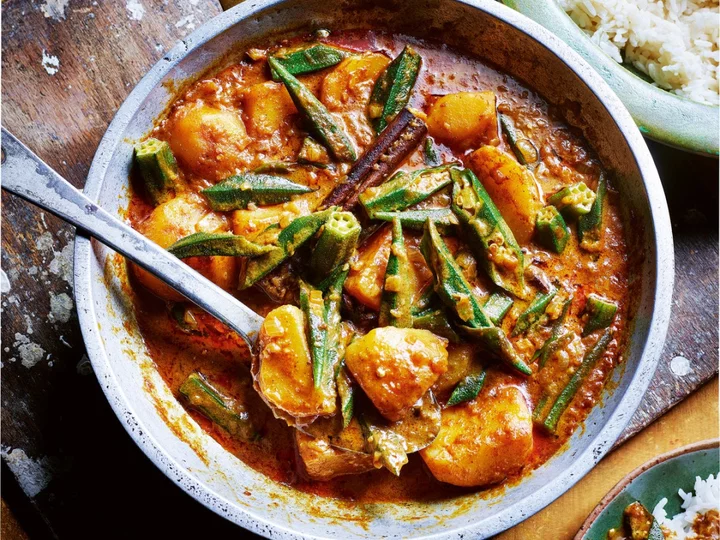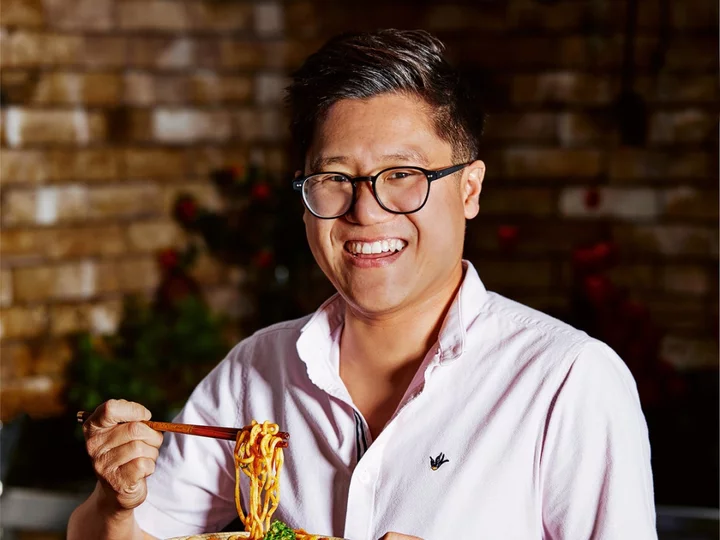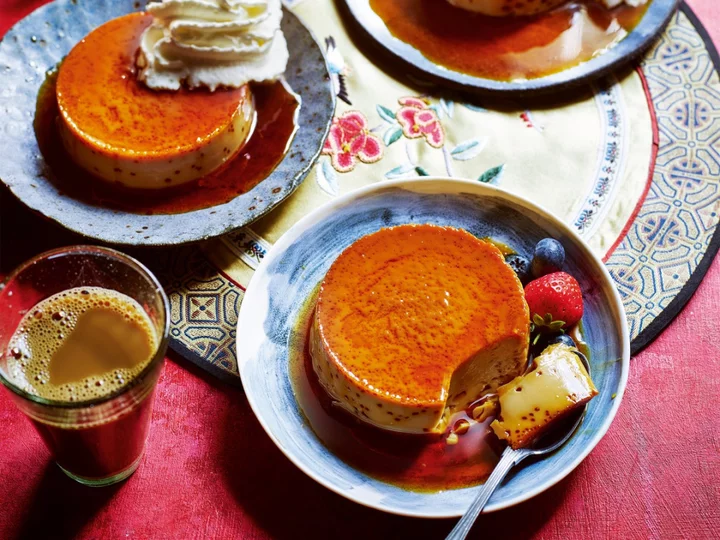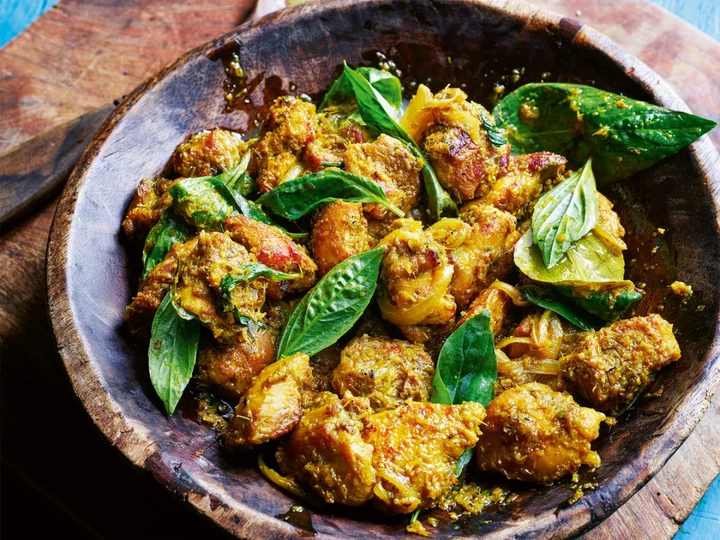
Hip-hop turns 50, reinventing itself and swaths of the world along the way
In the five decades since hip-hop emerged out of New York City, it has spread around the country and the world
1970-01-01 08:00

Serbia Plans €12 Billion Infrastructure Overhaul for Expo 2027
Serbia unveiled plans to pour billions of euros into overhauling infrastructure in the run-up to a major international
1970-01-01 08:00

Cathay Bullish on Prospects as Profit Soars to 13-Year High
Cathay Pacific Airways Ltd. expects its strong recovery from the Covid crisis to continue through the rest of
1970-01-01 08:00

Turkish Airport Operator TAV Tipped to Outperform with 40% Surge
A tourism boom will send shares in Turkish airport operator TAV Havalimanlari surging more than 40% over the
1970-01-01 08:00

Jay-Z's Made in America Festival, which Lizzo was headlining, cancelled
There will be no Made in America music festival this Labor Day weekend.
1970-01-01 08:00

Thai Central Bank Says a Rate Hike or Pause in Cards Next Month
Thailand’s central bank Governor Sethaput Suthiwartnarueput said he’s seeing the tail end of the monetary tightening cycle while
1970-01-01 08:00

What happens when you hit a 4,000-step target each day
Just 4,000 steps a day could be enough to reduce a person’s risk of early death, according to a new study – but academics found people reap more health benefits from every additional step. Fitness trackers and smart phones mean that people are more focused than ever on achieving the lauded 10,000 steps a day. But the new study, published in the European Journal of Preventive Cardiology, found that the number of steps a person needs to walk each day to benefit their health could be lower than previously thought. Researchers found that walking at least 3,967 steps a day helped a person start to reduce their risk of dying from any cause. And walking at least 2,337 steps a day started to reduce the risk of dying from heart diseases. The study, the largest of its kind to date, did conclude that the more a person walks, the lower the risk of premature death. Even if people walked as many as 20,000 steps a day, the health benefits continued to increase, they said. They found that the risk of dying from any cause or from cardiovascular disease – diseases of the heart and blood vessels – decreases significantly with every 500 to 1,000 extra steps a person walks. Indeed an extra 1,000 steps a day was associated with a 15 per cent reduction in the risk of dying from any cause, and an increase of 500 steps a day was associated with a seven per cent reduction in dying from cardiovascular disease. Academics, led by Maciej Banach, professor of cardiology at the Medical University of Lodz in Poland, and adjunct professor at the Ciccarone Centre for the Prevention of Cardiovascular Disease, Johns Hopkins University School of Medicine in the US, examined 17 different studied with information on almost 227,000 people. People were tracked for an average of seven years. “Our study confirms that the more you walk, the better,” said Prof Banach. “We found that this applied to both men and women, irrespective of age, and irrespective of whether you live in a temperate, sub-tropical or sub-polar region of the world, or a region with a mixture of climates. “In addition, our analysis indicates that as little as 4,000 steps a day are needed to significantly reduce deaths from any cause, and even fewer to reduce deaths from cardiovascular disease.” “In a world where we have more and more advanced drugs to target specific conditions such as cardiovascular disease, I believe we should always emphasise that lifestyle changes, including diet and exercise, which was a main hero of our analysis, might be at least as, or even more effective in reducing cardiovascular risk and prolonging lives.” Dr Ibadete Bytyci, from the University Clinical Centre of Kosovo, and senior author of the paper, added: “Until now, it’s not been clear what is the optimal number of steps, both in terms of the cut-off points over which we can start to see health benefits, and the upper limit, if any, and the role this plays in people’s health. However, I should emphasise that there were limited data available on step counts up to 20,000 a day, and so these results need to be confirmed in larger groups of people.” Health officials in England previously urged people to focus on increase the pace of their walking, rather than just focus on the distance or number of steps. People should “focus on brisk walking, not just 10,000 steps”, according to 2018 advice from Public Health England and the Royal College of GPs. Read More Wilko isn’t just a shop – it’s a magical portal to essential British tat ‘Oblivious’ woman defended after walking through beach wedding: ‘They don’t own the beach’ Woman behind ‘not real’ plane tirade identified as marketing executive with $2m home Charity boss speaks out over ‘traumatic’ encounter with royal aide Ukraine war’s heaviest fight rages in east - follow live
1970-01-01 08:00

Midweek comfort food: Singaporean curry sauce and rice
There’s a meal in Singapore called ‘scissors-cut rice’, a selection of dishes piled high over a plate of lovely fluffy rice and topped with curry sauce,” says chef Jeremy Pang. “Originating from Hainanese Chinese descendants, the dish can be seen as a cross between a Malaysian nasi lemak and a Japanese katsu curry.” Curry sauce and rice Serves: 2 Ingredients: 2 cups of jasmine rice 2 cups of water 1 onion, finely diced ½ thumb-sized piece of ginger, peeled and finely chopped 2 garlic cloves, finely chopped 3 green chillies, pierced with the tip of your knife 1 potato, peeled and cut into 5cm chunks 300ml chicken stock 200g okra (swapsies: green beans), cut into 3-4cm lengths Vegetable oil For the sauce: 150ml coconut milk 1 tbsp sambal (swapsies: chilli bean sauce/toban jiang) 1 tbsp light soy sauce ½ tsp salt For the spices: 2 star anise 1 cinnamon stick 1½ tbsp curry powder Method: 1. Wash the rice at least three times. Place in a bowl and run under cold water, gently moving the rice grains between the tips of your fingers. Pour the rice through a sieve in between each wash, until the water runs clear. Sieve one last time and set aside. 2. Mix the sauce ingredients together in a jug. 3. Build your wok clock: start at 12 o’clock with the rice, followed by the onion, ginger and garlic, the spices, green chillies, potato, the sauce, chicken stock and lastly the okra. 4. Place the rice in a saucepan with the measured water. Cover with a tight-fitting lid, place on a medium-high heat and bring to a vigorous boil. Then reduce the heat to low and simmer with the lid on for 12-15 minutes until the liquid has evaporated to the point where you start to see air pockets form in between some of the rice grains. Replace the lid, turn the heat off and leave the rice to sit for another 15 minutes or so until ready to serve. 5. Once the rice is cooking, heat one to two tablespoons of vegetable oil in a saucepan to a medium heat, add the onion and fry for two to three minutes. Add the ginger and garlic and fry for a minute or so. Then add all the spices together, the green chillies and potato in turn, frying for about a minute after each addition. Pour in a quarter of the sauce and bring to a vigorous boil. Add another quarter of the sauce and again bring to a boil, then repeat this process until all the sauce has been added. Bring to a boil once again, pour in the chicken stock and cook on a medium heat for 20 minutes. Then add the okra and cook for five to 10 minutes before serving with the rice. ‘Jeremy Pang’s School Of Wok: Simple Family Feasts’ (Hamlyn, £22). Read More Marina O’Loughlin is wrong – there’s joy in solo dining Budget Bites: Three recipes to keep food bills down before pay day Meal plan: Romesco chicken and other recipes to fall in love with The chef who hated food as a child Who knew a simple flan could be so well-travelled? How to make Thai favourite lemongrass chicken stir-fry
1970-01-01 08:00

The chef who hated food as a child
Jeremy Pang doesn’t have a classic chef origin story: he “hated” food as a child. Before he turned 10, the chef, teacher and owner of the School of Wok in London admits: “I hated eating – I honestly did not like food. “Up to the age of, like, nine, it would take my mum two, three hours to get my dinner down me. I just didn’t want to eat – I wanted to go out and play football with my mates. I wanted to go and do stuff and play – I also wanted to eat fish fingers and all the stuff my friends were eating at home.” Pang grew up in a Chinese household and is a third-generation chef. When he was 10 years old, his family moved from the UK to Singapore for two years. Now aged 39 and based in southwest London, Pang says upon making the move, his “life completely changed”. He says: “When you go into hawker centres [open-air food markets] in Singapore, it’s a different world. Every single stall is a specialist in one type of food – not even cuisine. So you might have one uncle who has cooked chicken rice for his whole life, or another person who has cooked Hokkien Mee [a stir-fried noodle dish] for 40 years. “When people are as specialist as that, you cannot not want to eat it. And you see everyone digging into their food with no real etiquette – but the etiquette is the enjoyment of that bowl of food.” From there, Pang says Singapore “opened mine and my sister’s horizons” and he fell in love with food. With Singapore’s proximity to other Southeast Asian countries, he was exposed to a variety of cuisines – from Indonesian to Malaysian – many of which are taught at the School of Wok, along with the Chinese food Pang grew up with. With two kids of his own, aged six and two, Pang says: “I now feel so sorry for my mum.” Before the Covid-19 pandemic, the chef says of his oldest: “It was really difficult to get him to enjoy anything that wasn’t raw carrot or cucumber – which actually is healthy at least, but every day? That’s hard.” The pandemic shifted his son’s eating habits. Pang took a couple of months off and “cooked with him – we started making homemade pizzas, flapjacks – anything he wanted to make. He definitely at that point thought he had more of a Western palate, but I’ve known since he was really young and started eating that he does love Chinese food. “He likes the slightly lighter palate, and home-cooked Chinese food can be quite light – steamed fish, flash-fried vegetables, things like that.” One constant from Pang’s childhood to his family life now is the concept of feasting – serving multiple dishes for one meal. “This is how Asian cuisine is eaten, and should be eaten,” he says simply. “My style of cooking is 100 per cent home cooking anyway, and I’ve grown up with it. If you are Asian, that’s just a way of life. But if you’re not, it’s hard to compute how to get four or five dishes on the table, all hot or in the right state at the right time.” He continues: “Even if when we’re doing midweek meals at home, if I’m cooking Chinese or Southeast Asian just for the four of us, I’ll quite often cook two or three dishes. Those two or three dishes are there to be shared – that absolutely is our way of cooking and eating.” Pang’s latest book, Simple Family Feasts, is all about demystifying this concept for home cooks who haven’t grown up with it. Each chapter is dedicated to a different cuisine – including Chinese, Vietnamese, Singaporean and Indonesian – and shows you how to build a feast, guiding you through which dishes to make and in what order. Balance is crucial to pulling off a feast. “If, for example, you just ate crispy, deep-fried stuff – which is terribly bad for you, but we all love it – yes, you want to eat lots of it at the beginning. But five minutes later, you might get lost in that deep fried, crispy, greasy world, and so you’re likely to stop eating it at some point quite quickly. “But if you had something crispy, you have something opposite that melts in the mouth, you had something soft with a gentle bite, you had crunchy – usually from fresh vegetables or flash-fried vegetables, salads, anything like that – and you had a perfect balance of those textures. Honestly, I think you could just keep eating.” Growing up with this style of cooking must make Pang a brilliant multitasker – something he says is “a great skill to have”, but “sometimes it’s my worst enemy”. “I’m constantly multitasking – I get to the end of the day and I don’t know what’s happened, I sometimes can’t tell you what I’ve done in a day. I might have done a million different things… So in some ways, I’m very good at multitasking – but when I get home, my wife probably wouldn’t agree with that.” Like all of Pang’s cookbooks, this is an “ode to my father”, who passed away in 2009. “He’s the one who instilled that love of cooking and cuisine – especially Asian food. He never really taught me how to cook, he just said, ‘Stand and watch’, or, ‘Taste this and tell me what’s in it’. That was his style of teaching.” ‘Jeremy Pang’s School Of Wok: Simple Family Feasts’ (published by Hamlyn; £22). Read More Marina O’Loughlin is wrong – there’s joy in solo dining Budget Bites: Three recipes to keep food bills down before pay day Meal plan: Romesco chicken and other recipes to fall in love with Who knew a simple flan could be so well-travelled? Midweek comfort food: Singaporean curry sauce and rice How to make Thai favourite lemongrass chicken stir-fry
1970-01-01 08:00

Who knew a simple flan could be so well-travelled?
Of all the sweet dishes in the world, you wouldn’t expect the simple flan to be so well-travelled,” says chef Jeremy Pang. “Yet when you look at the simplicity of its ingredients – essentially a sweetened and flavoured egg custard – you can see why so many cultures have adopted the flan into their own cuisines. “This coffee-flavoured version is found in most coffee shops in Vietnam, but it’s also one of the most popular desserts in the Philippines.” Coffee and coconut flan Makes: 10 Ingredients: For the caramel: 300g caster sugar 300ml water For the custard: 6 large eggs, at room temperature 400ml coconut milk 300ml condensed milk 1 shot of strong espresso (swapsies: 2 tbsp good-quality instant coffee dissolved in 1 tbsp hot water) Whipped cream, fresh fruit or sugared peanuts, to decorate Method: 1. Stand 10 ramekins in an ovenproof dish or a deep-sided baking tray. Preheat the oven to 160C/350F/gas mark 4. 2. For the caramel, place the sugar and water in a saucepan on a low heat and stir for three to four minutes, until the sugar fully dissolves. Increase the heat to high and allow the sugar syrup to boil vigorously, without stirring, for about five to six minutes until it reaches a rich golden brown colour, taking care to ensure it doesn’t burn. Once ready, carefully and without hesitation, divide the caramel between the ramekins to form a layer of caramel on the base of each one. 3. For the custard, crack the eggs into a large mixing bowl, add the coconut milk and condensed milk, and beat well to form a thick, smooth mixture. Add the coffee and stir in, then strain the custard through a fine mesh sieve into a jug. Divide evenly between the ramekins. 4. Pour boiling water into the ovenproof dish until level with the top of the custard in the ramekins, being careful not to get any in the flans. Bake for 45 minutes to one hour, depending on size, until set. Remove from the oven and allow to cool slightly, then remove the ramekins from the hot water, taking care not to burn yourself. Allow to cool completely before serving. 5. To serve, loosen the rim of each flan using a dampened finger and then turn out onto a serving plate. Decorate with whipped cream, fresh fruit or sugared peanuts. ‘Jeremy Pang’s School Of Wok: Simple Family Feasts’ (Hamlyn, £22). Read More Marina O’Loughlin is wrong – there’s joy in solo dining Budget Bites: Three recipes to keep food bills down before pay day Meal plan: Romesco chicken and other recipes to fall in love with The chef who hated food as a child Midweek comfort food: Singaporean curry sauce and rice How to make Thai favourite lemongrass chicken stir-fry
1970-01-01 08:00

How to make Thai favourite lemongrass chicken stir-fry
I know with absolute certainty why this dish is a big-hitter on the School of Wok YouTube channel,” says chef Jeremy Pang. “Like many Thai curries and stews, it’s bold in flavour, but it can be cooked in a fraction of the time it takes for some of the slower-cooked recipes. “That means less time spent salivating over the stove and more time to eat. This fierce stir-fry will make your mouth water and your guests’ too – if you haven’t picked it all out of the wok before they arrive!” Lemongrass chicken Serves: 2 Ingredients: 4 skinless, boneless chicken thighs, cut into large chunks 1 tbsp chicken stock or water ½ white or brown onion, finely sliced 2-3 lime leaves Handful of Thai basil leaves Vegetable oil For the curry paste: 3 spring onions, finely chopped 3 garlic cloves, finely chopped 2 lemongrass stalks, trimmed, bruised and finely chopped ½ thumb-sized piece of ginger, peeled and finely chopped ½ thumb-sized piece of turmeric, peeledand finely chopped (swapsies: 1 tsp ground turmeric) 5-6 lime leaves, finely chopped ½ tsp salt For the sauce: 1 tbsp light soy sauce 1 tbsp fish sauce ½ tbsp palm sugar 50ml chicken stock Method: 1. Pound the paste ingredients together using a pestle and mortar, adding them one at a time, or blitz them in a food processor to form a smooth paste (you may need to add a tablespoon or so of water). 2. Mix the sauce ingredients together in a small bowl. 3. Place the chicken pieces in a bowl. Mix one tablespoon of the curry paste with the chicken stock or water and massage it into the chicken. 4. Build your wok clock: start at 12 o’clock with the marinated chicken, followed by the rest of the curry paste, the onion, the sauce, lime leaves and lastly the Thai basil leaves. 5. Heat one to two tablespoons of vegetable oil in a wok on a high heat until smoking hot. Add the marinated chicken and sear for a minute without moving, then fold the chicken over to sear on the other side for another minute or so. Once the chicken has a nice crisp edge and is fully browned, push it to the side of the wok. Add the curry paste to the centre of the wok, then the onion and fold the chicken over the mixture to incorporate and prevent the meat from burning. After about a minute, the onion should start to wilt. At this point, increase the heat and allow the wok to smoke before pouring the sauce around the edges of the wok. Bring to a vigorous boil, fold the chicken through and stir-fry for one to two minutes. Add the lime leaves and Thai basil leaves to finish and serve immediately. ‘Jeremy Pang’s School Of Wok: Simple Family Feasts’ (Hamlyn, £22). Read More Marina O’Loughlin is wrong – there’s joy in solo dining Budget Bites: Three recipes to keep food bills down before pay day Meal plan: Romesco chicken and other recipes to fall in love with The chef who hated food as a child Who knew a simple flan could be so well-travelled? Midweek comfort food: Singaporean curry sauce and rice
1970-01-01 08:00

The 10 Most Popular Wedding Songs
First dance songs, wedding reception songs … This list has a little of everything.
1970-01-01 08:00
